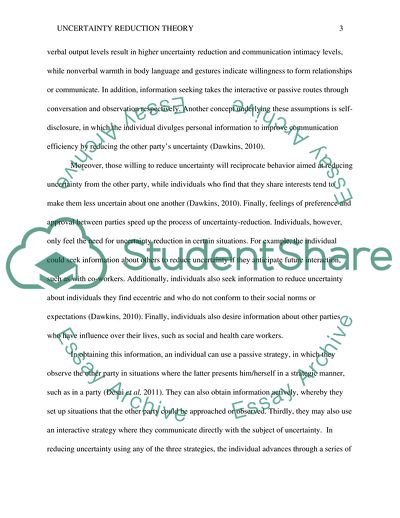Cite this document
(Uncertainty Reduction Theory Report Example | Topics and Well Written Essays - 1250 words, n.d.)
Uncertainty Reduction Theory Report Example | Topics and Well Written Essays - 1250 words. https://studentshare.org/journalism-communication/1839887-communication-theory-paper
Uncertainty Reduction Theory Report Example | Topics and Well Written Essays - 1250 words. https://studentshare.org/journalism-communication/1839887-communication-theory-paper
(Uncertainty Reduction Theory Report Example | Topics and Well Written Essays - 1250 Words)
Uncertainty Reduction Theory Report Example | Topics and Well Written Essays - 1250 Words. https://studentshare.org/journalism-communication/1839887-communication-theory-paper.
Uncertainty Reduction Theory Report Example | Topics and Well Written Essays - 1250 Words. https://studentshare.org/journalism-communication/1839887-communication-theory-paper.
“Uncertainty Reduction Theory Report Example | Topics and Well Written Essays - 1250 Words”. https://studentshare.org/journalism-communication/1839887-communication-theory-paper.


